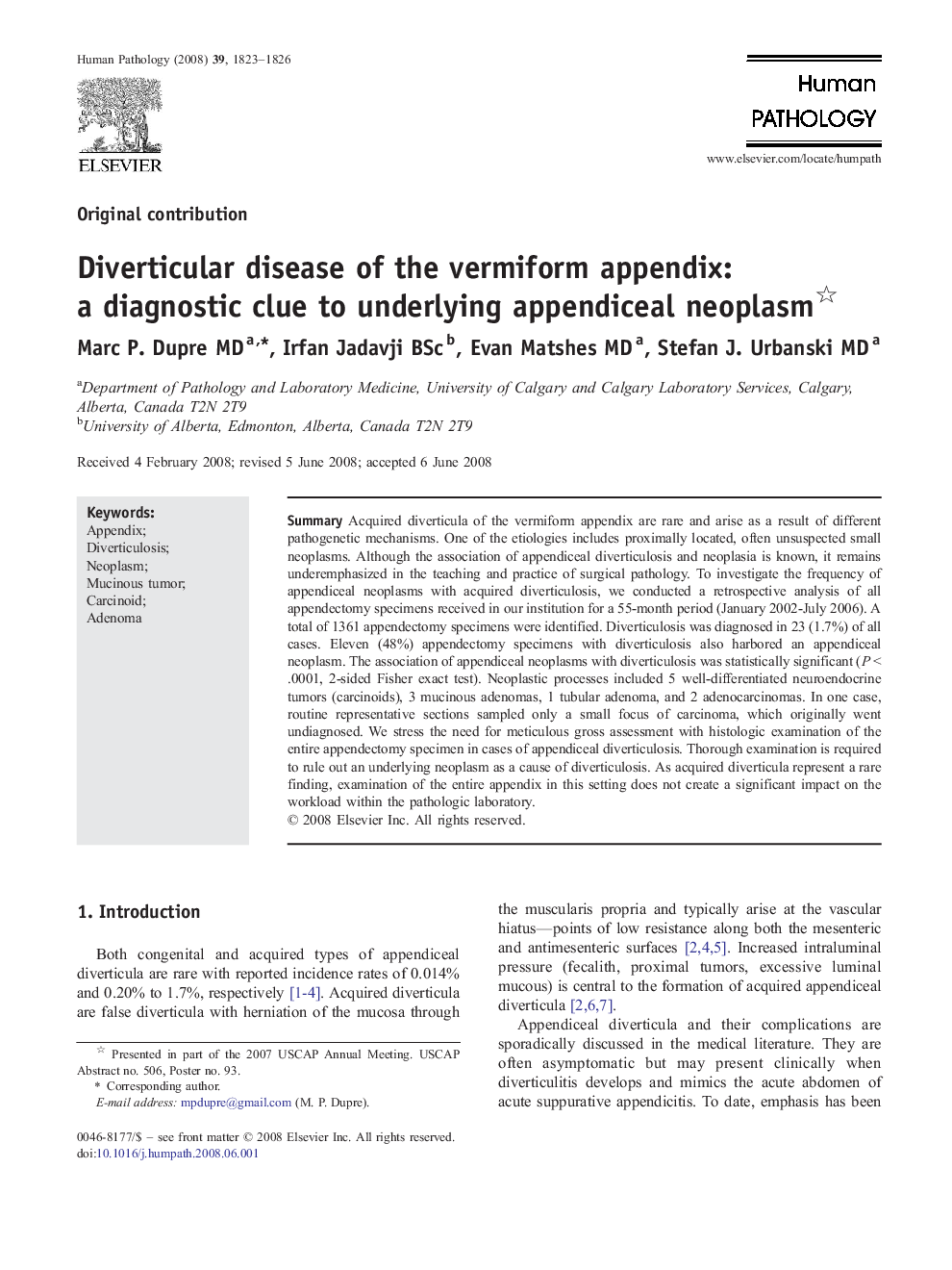| Article ID | Journal | Published Year | Pages | File Type |
|---|---|---|---|---|
| 4134804 | Human Pathology | 2008 | 4 Pages |
SummaryAcquired diverticula of the vermiform appendix are rare and arise as a result of different pathogenetic mechanisms. One of the etiologies includes proximally located, often unsuspected small neoplasms. Although the association of appendiceal diverticulosis and neoplasia is known, it remains underemphasized in the teaching and practice of surgical pathology. To investigate the frequency of appendiceal neoplasms with acquired diverticulosis, we conducted a retrospective analysis of all appendectomy specimens received in our institution for a 55-month period (January 2002-July 2006). A total of 1361 appendectomy specimens were identified. Diverticulosis was diagnosed in 23 (1.7%) of all cases. Eleven (48%) appendectomy specimens with diverticulosis also harbored an appendiceal neoplasm. The association of appendiceal neoplasms with diverticulosis was statistically significant (P < .0001, 2-sided Fisher exact test). Neoplastic processes included 5 well-differentiated neuroendocrine tumors (carcinoids), 3 mucinous adenomas, 1 tubular adenoma, and 2 adenocarcinomas. In one case, routine representative sections sampled only a small focus of carcinoma, which originally went undiagnosed. We stress the need for meticulous gross assessment with histologic examination of the entire appendectomy specimen in cases of appendiceal diverticulosis. Thorough examination is required to rule out an underlying neoplasm as a cause of diverticulosis. As acquired diverticula represent a rare finding, examination of the entire appendix in this setting does not create a significant impact on the workload within the pathologic laboratory.
